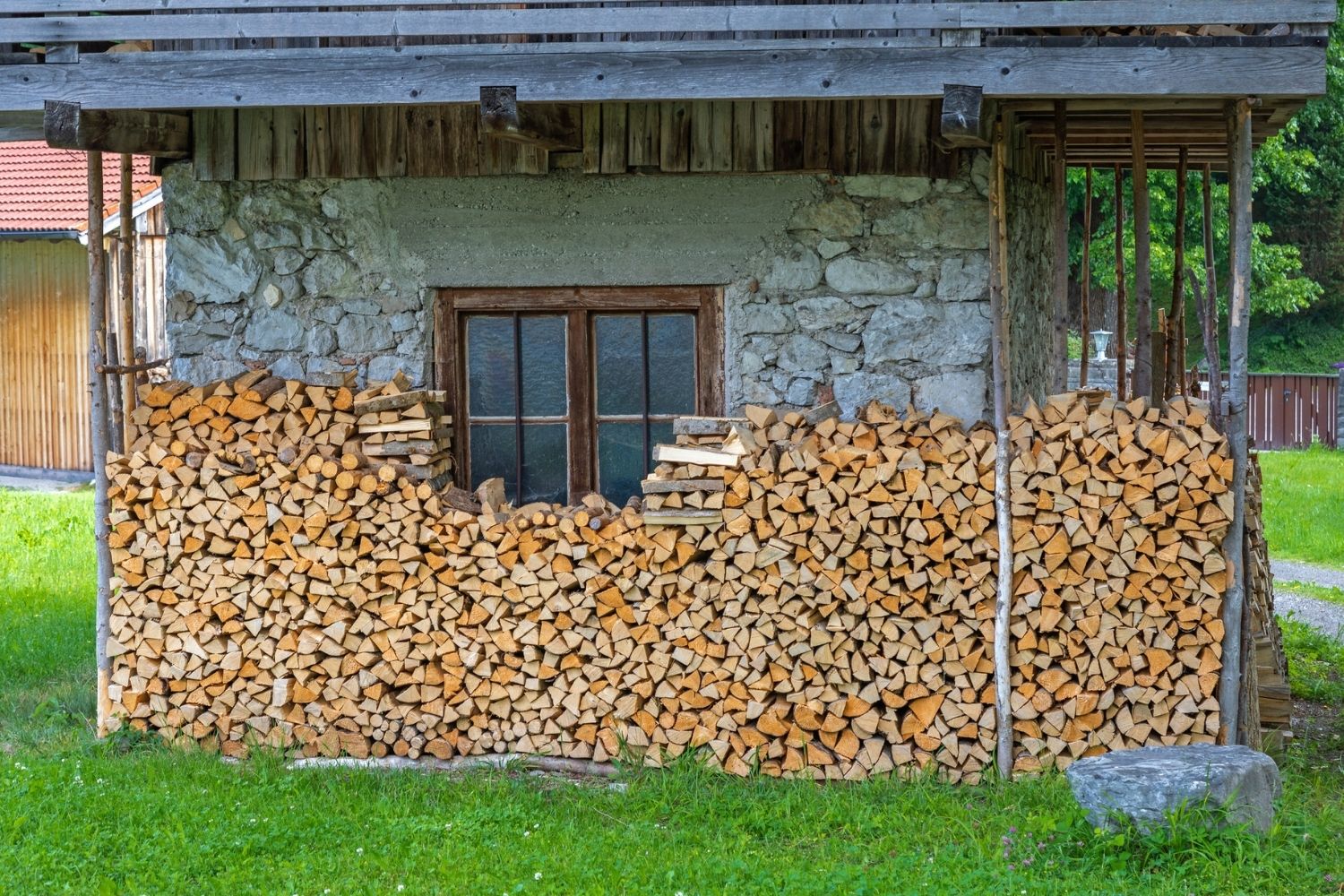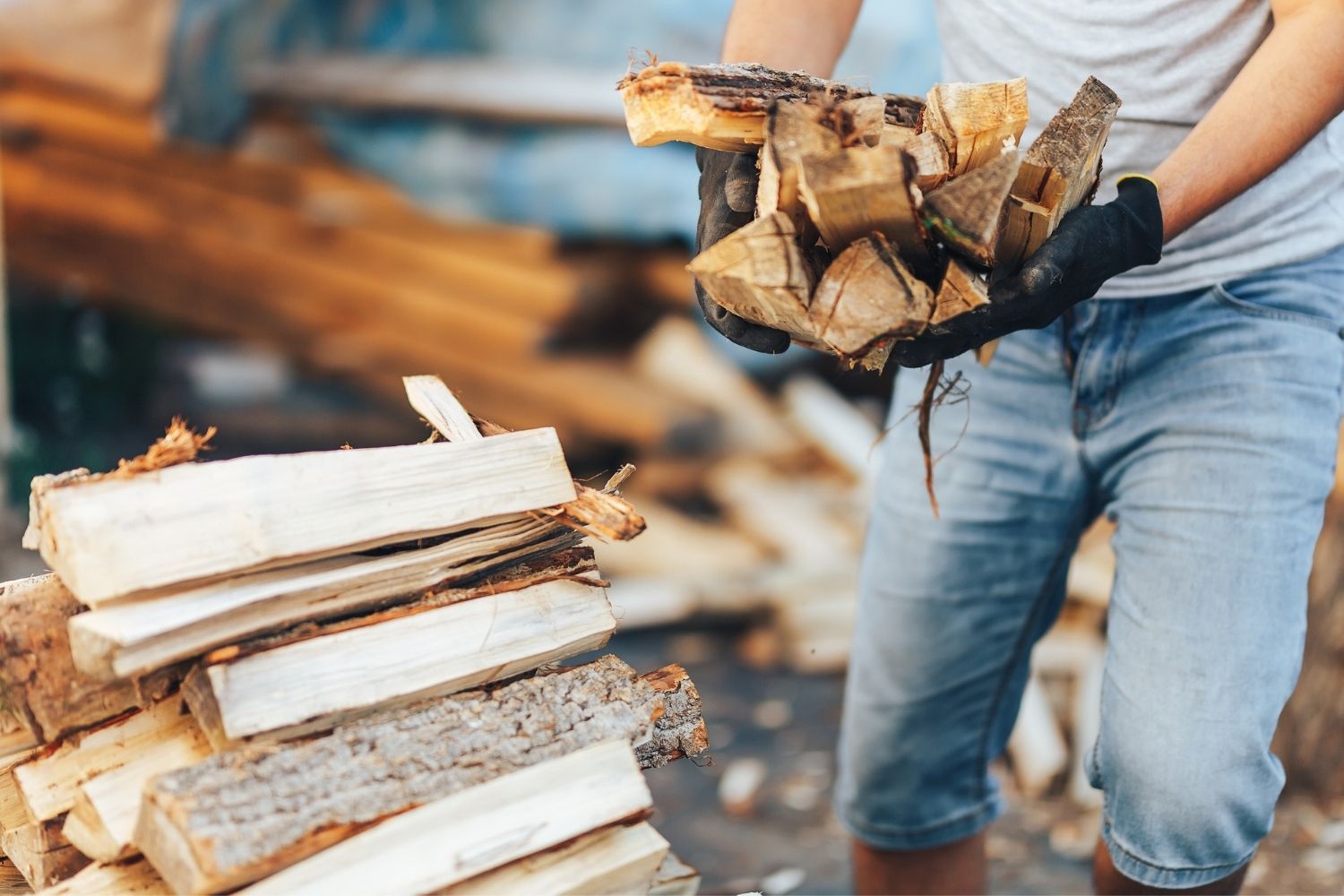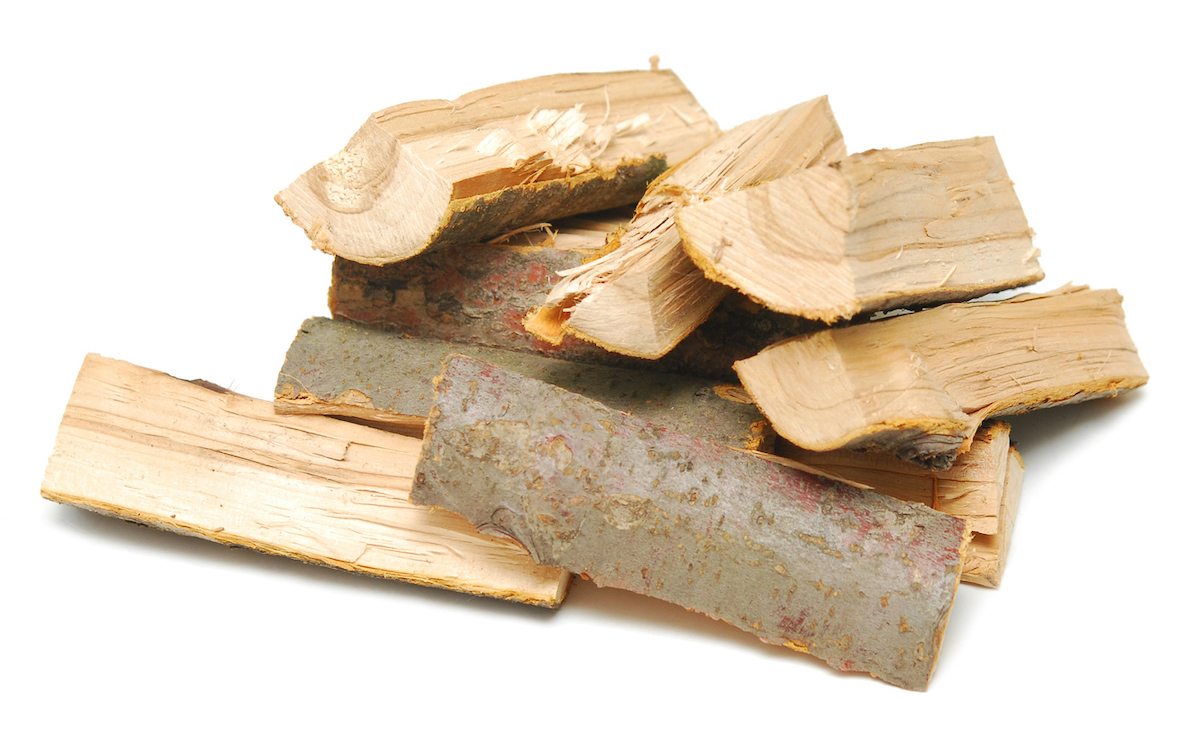We may earn revenue from the products available on this page and participate in affiliate programs. Learn More ›
Nothing celebrates the colder weather like the distinct scent and sound of a crackling log in the wood burning fireplace. A steady supply of firewood can help offset your heating costs and, unlike oil and coal, is a renewable resource that can be replanted for future fire-burning pleasure. It takes up to a year to properly season wood, but following these guidelines so you know how to stack firewood properly will help keep purchased logs dry and burnable.
Tips For Stacking Firewood
While stacking firewood is a simple task, it may not be as straightforward as you might think. There are a number of things about how to stack firewood that help ensure the seasoned wood lasts and can be used as intended:
- Keep the seasoned wood dry—if the wood isn’t covered or sheltered, use a tarp to cover the top only so the rest of the wood can breathe.
- Stack two logs one way and two logs the opposite way, then add wood to fill the columns.
- Square-cut logs or those that are quite flat are great for columns, while round logs—with the largest on the bottom for support—work well in the main pile.
- All logs, whether stacked in columns or placed in the main pile, need to be level or you’ll risk them falling over.
- For safety’s sake when you stack wood, wear work boots, preferably with steel toe protection.

5 Popular (and Easy) Firewood Stacking Techniques
You may not know that, historically and to this day, different cultures and countries use various techniques for firewood stacking. Each has its own unique benefits, but how much wood you need might dictate which method you choose and the way the wood is stacked and stored. The best way to stack firewood may very well be one of these four popular methods: the German method, end pillar wood stack, firewood stacked in a circle, stacking wood with a rack, and the shaker woodpile method.

1. The German Method
One way to stack firewood is with the German, or holzhaufen (woodpile) or holz hausen (wood house), method. This design lets air flow to the stack’s center, so each piece of wood stays dry. When you’re done with the steps below, you should have a firewood stack that’s about 6 feet in diameter by 7 feet high.
- Use firewood measuring no more than 12 to 24 inches long and pieces that are the same width, so there’s uniformity.
- Place a 7-foot-high stake in the middle of the pile, and lay the firewood down with one end toward the stake and the other toward the outside (eventually creating a circle).
- Repeat this in a circular manner until you get to about 7 feet high.
- To protect the wood from the elements, finish the pile off by placing pieces with bark on top.

2. End Pillar Wood Stack
A classic and arguably the most popular method, the end pillar wood stack works best with uniform pieces for pillars fit as snugly as you can. This will help with stability and support. Follow these steps to create your own end pillar wood stack:
- To construct the towers, take two similarly shaped logs and turn them parallel to each other.
- Build the next layer with two parallel logs that are perpendicular from the first set.
- Continue until you have about a dozen levels, or as high as you can without letting it get unwieldy.
- The second tower should be even with but several feet away from the first. In between, lay the logs next to each other so that the cut ends face the direction of the prevailing wind (in the US, weather systems tend to move from west to east, so facing west is a good bet).
- Keep layering until the pile is the same height as the towers.
- Place the pieces bark side up to keep them from shedding moisture into the pile. Although it’s tempting to stack all your wood in neat towers, they aren’t as effective for seasoning purposes, as they don’t allow for enough air ventilation.
- Finally, use long sticks to help bolster the pile, leaning them against the woodpile and stabilizing them in the dirt.
Related: This Cheap Storage Hack Keeps My Firewood Dry All Winter Long

3. Holzhaus – Firewood Stacked in a Circle
The Holzhaus method of stacking firewood in a circle is symmetrical and self-sustaining without needing a shed or rack. Popular in Europe, this effective method is now catching on in the United States and other countries. Try it by following these steps:
- Choose a sunny area to create your pile that also has good air circulation.
- Draw out a circle 8 by 10 feet in diameter.
- Set the end of each log around the edge of the circle—this will create the bottom layer.
- Continue in this fashion by adding layers of wood around the circle’s perimeter.
- Add small pieces or those of an odd size to the middle of the circle.
- Place the top layer at an angle, ideally with pieces of wood laying across the pile’s center.

4. Stacking in a Firewood Rack
In addition to these more complex methods for stacking firewood, don’t forget about using a tried-and-true rack. Make a neat pile in a rack by following these steps:
- Take pieces of wood that are about equal in size and lay them side by side on the rack, then do the same in the opposite direction.
- Continue stacking until the pile is about 4 feet high, ensuring as you go that the stack is sturdy and doesn’t wobble when pushed.
- Fill in big gaps with smaller pieces of wood, which will strengthen the pile.
5. The Shaker Woodpile Method
The shaker woodpile, another popular shape, is a round formation in which the sticks touch at one end, but spiral out with bigger gaps at the opposite end. The first layer looks a little like spokes on a wheel, and it’s a good way to use up oddly shaped logs, adding a nice visual presence to the yard.
This method is quick, stable, and dries wood fast. To create a Shaker woodpile of your own, follow these steps:
- Place a log or branch about 8 inches wide by 16 inches long in the center of where your pile will be and construct a base of split logs in a circle, like a wheel’s spokes, at least two rows deep.
- Add two split logs above the center and lean more firewood against them, adding layers until the pile is about shoulder height and creates a disc shape.
- Stop when the top forms a cone and you can no longer add wood.

FAQ About How to Stack Firewood
Do I need to season firewood before stacking?
It’s prudent to season your firewood before stacking it to remove the moisture, which makes it easier to burn. When unseasoned wood is burned, water vapor combines with gases and particles and enters the chimney. This can be problematic, as the residue is highly flammable.
Which kind of wood is best for firewood?
Buy or quarter your hardwoods, such as hickory, White Oak, and White Ash (softwoods ignite faster but burn too quickly), remembering that it’s good to get a range of log sizes: Smaller ones catch faster, while the larger, thick pieces burn longer. The most traditional pile has rows of logs held by a support tower at each end.
Is it OK to stack firewood on the ground?
It’s not a good idea to stack firewood on the ground. Wood attracts termites, plus moisture from the ground can get into the wood and prevent it from drying out. Instead, raise it off of the ground for storage with one of the stacking methods above.
How do you dry firewood quickly?
The wind and sun will help dry firewood out quickly, especially if these elements reach every part of the wood’s surface. You can safely leave your wood out for a few months to minimize drying time before stacking it properly.
How do you cover stacked firewood?
A tarp is your best bet for covering stacked firewood. Be sure to cover just the top of the pile (not the sides, since that can block airflow), and allow 1 or 2 inches of tarp to hang loosely over the stack.

